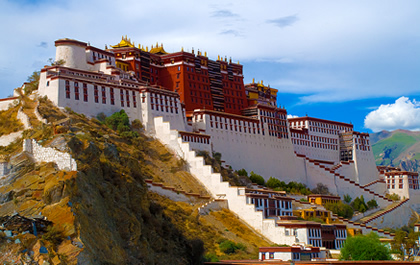Tibet’s political ties with China began in the seventh century. It was annexed into the Yuan dynasty by Kublai Khan and came under tight Mongol control in the 13th century. Under the subsequent Ming dynasty (1366–1644), China conferred titles on local Tibetan leaders but exercised only loose supervision over them.
The Qing (Ch’ing) dynasty (1644–1911) exerted considerable control over Tibet during its prime, stationing imperial commissioners and garrisons in its major centers. The Qing rulers also honored Tibet’s spiritual leaders the Dalai and Panchen Lamas.
Tibet became a pawn in international politics in the late 19th century; with the Qing dynasty in decline both Great Britain and Russia became interested in controlling Tibet and interfered in its internal politics, which neither China nor local Tibetans could resist. Weak Chinese central governments in the republican period were too beset by other problems to deal effectively with Tibet, which enjoyed autonomy. No country, however, recognized Tibet as an independent nation.
An important goal of the People’s Republic of China was to assert control over Tibet. The Panchen Lama, the second leader of Tibet who was headquartered in Tashilhumpo, accepted Chinese sovereignty. The Dalai Lama’s government in Lhasa vainly tried to obtain international assistance in resisting China in 1950.
His representatives then signed a Seventeen-Point Agreement in Beijing (Peking) in 1951 that allowed the Tibetans to maintain their traditional religious (Tibetan Buddhism), political (theocracy), and economic (large estates owned by monasteries and aristocrats) systems, under Chinese control. The Dalai Lama visited Beijing in 1954, had conversations with Chinese leader Mao Zedong (Mao Tse-tung), and expressed optimism that he could "work out a synthesis of Buddhist and Marxist doctrines".
The Chinese Communists, however, looked at the traditional Tibetan Buddhist society, the theocratic government, and the landed estate system with extreme distaste and began a aktivitas to dismantle both. By 1957 armed resistance had begun in eastern Tibet that culminated in an uprising in Lhasa against the Chinese government in 1959.
Realizing that the revolt was suicidal and fearing that he would be captured by the Chinese, the Dalai Lama and his advisers fled Lhasa in disguise in March 1959 and headed for the Indian border. After putting down the revolt, China implemented a aktivitas that brought Tibet more in line with the rest of the country.
Chinese-Indian relations, warm after the establishment of the People’s Republic, had become antagonistic by 1959, partly over Tibet. Popular sentiment in India sympathized with the Tibetans. In April the Dalai Lama and his party crossed into India and were granted political asylum.
The Indian government also gave political asylum to 13,000 Tibetan refugees and allowed the Dalai Lama to establish a government in exile in Dharmasala, a Himalayan town near the Chinese border.
These acts further soured Chinese-Indian relations and exacerbated a border dispute that negotiations between the premiers of the two countries failed to resolve, and that culminated in a border war in 1962.

